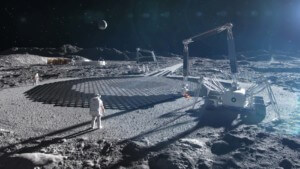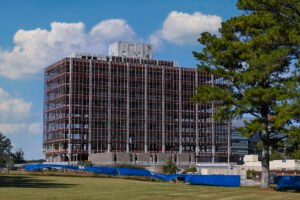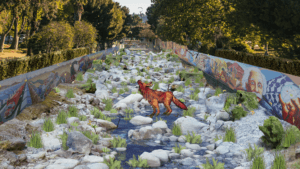Constance Adams was not an average architect. Her work was literally out of this world. Instead of imagining structures to build on planet Earth, she dedicated her life to designing habitats for humans in outer space. The 53-year-old space architect died last week in her home in Houston, Texas.
Adams is best known for working on the inflatable Kevlar Transit Habitat (TransHab), a prototype live/work space for astronauts aboard the International Space Station (ISS). The design, developed with her partner, NASA space architect Kriss Kennedy, was originally intended as an attachment to the ISS that could fold into a compact bundle for launch and easily deploy in orbit. The pop-up habitat was designed to function as a traditional house across three levels that featured six bedrooms, communal dining and lounging spaces, a galley, a sick bay, a work space, and a gym.

The innovative TransHab never became a reality due to lack of funding, but it did influence an experimental, inflatable module that is currently in orbit today. The Bigelow Expandable Activity Module (BEAM), a smaller version of Adams’s design, launched in 2016 and is being used as cargo storage for ISS. NASA is using BEAM to test the viability of expandable habitats and their resistance to solar and cosmic radiation, extreme temperatures, and space debris.
Though her research and work seems unconventional, Adams’s career began with more a more usual focus: she designed high rises and configured city masterplans in architecture offices in the U.S. and abroad. During her master’s degree study at Yale School of Architecture, she interned for César Pelli and after graduation held positions for Kenzo Tange in Tokyo and Josef Paul Kleihues in Berlin. In 1996, Adams returned to the U.S. to interview for a job in Houston where she toured NASA’s Johnson Space Center, sparking her curiosity in the space program and her interest in designing interior architecture for humans in outer space.
Lockheed Martin, the global aerospace and security company, eventually hired her as a consultant for NASA’s new Habitability Design Center. She immediately began work on her first project called the BIO-Plex, a prototype surface habitat in which six people could survive on Mars for over a year. It was designed with an ecosystem featuring high-performing technology housing plant-growth chambers, waste management, and clean-water systems.

In those first years at NASA, Adams struggled to adjust her way of design thinking, but she soon found there were many similarities between urban design and designing for space, as she told Metropolis in May 2017. “A space-craft really is a master plan,” she said. “It’s not just a city—it’s an entire region. It’s like a close-loop system the size of a house or an apartment, depending upon which phase of a space station it is.”
While Adams’s seminal work relied heavily on complex engineering, she was most concerned with the human-centered aspect of design, particularly how a person would interact with an unfamiliar space set up in a weightless environment. Her two-decade career studying this uncharted architectural territory led to many other innovative projects, including several focused on supporting life on Mars—one of her favorite topics.
Adams also worked on the cabin architecture and systems design for NASA’s X-38 Crew Return Vehicle, which was canceled due to budget cuts. Last year, she worked with Ikea designers at the Mars Desert Research Center near Hanksville, Utah as they explored space-saving solutions for their furniture collections while living in a Mars simulator. In 2011, through her consulting company Synthesis International, Adams partnered with URS and Foster+Partners on the highly-publicized Virgin Galactic commercial hangar facility, Spaceport America, in New Mexico.
Adams left behind a lifetime of research on human-machine interface, sustainable systems, and biomimetic design in interior architecture. Her inventive space habitats, currently being iterated in new designs at NASA, will help impact the future of living on Earth and beyond.











